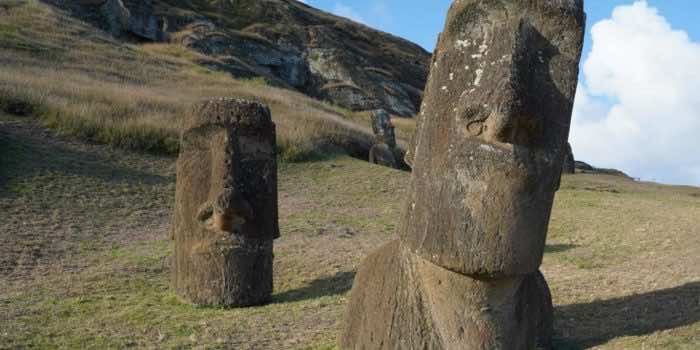A suspected arson attack on Easter Island has led to a wildfire that caused “irreparable” damage to some of its popular stone-carved monumental heads, authorities have said.
The blaze, “totally charred” several stone heads after it consumed more than 247 acres (100 hectares) of the island’s Rapa Nui National Park.
Easter Island, also known as Rapa Nui, is a UNESCO World Heritage Site and the most remote inhabited island.
Ariki Tepano, the director of the Indigenous Ma’u Henua community stated that the damage was “irreparable and with consequences beyond what the eyes can see.” He added that “the moai are totally charred, and the effect of the fire is visible above all else.” (Translation by Live Science.)
On Friday (Oct. 6), Rapa Nui Mayor Pedro Edmunds Paoa told the Chilean broadcaster Radio PAUTA that the fire wasn’t an accident.
“This was created by a human being, it’s not an accident,” Paoa told Pauta in Spanish. “All the fires on Rapa Nui are caused by human beings.”

“As the stone cracks, with a heavy rain or with time, it loosens, falls, ceases to be stone, and becomes sand,” he explained, adding that the statues that weren’t semi-buried in the earth were the most badly affected. The mayor said that a “shortage of volunteers” meant park officials had struggled to get the fire under control.
The statues have been a victim of such treatment earlier as well. In 2020, a resident of the island was arrested for damaging one of the sacred statues with a pickup truck.
Another moai statue, known as Hoa Hakananai’a and on display at the British Museum in London, is facing a controversy over its return to the island.
“Give us a chance so he can come back,” Tarita Alarcón Rapu, the island’s governor, said after meeting with museum officials at the time. “I believe that my children and their children also deserve the opportunity to touch, see and learn from him. We are just a body. You, the British people, have our soul.”

In June 2019 two museum representatives, an anthropologist and the curator of the Oceania section of the museum, visited Easter Island. The museum has also appointed a curator charged with researching the history of its entire eight million artifact collection.
“It is not the purpose of this role to examine the specific histories of contested objects,” a museum spokesperson told the Art Newspaper, but the new curator Isobel MacDonald’s work “will cover areas of the collection that include contested objects,” including “issues such as the role of the slave trade and empire.”


